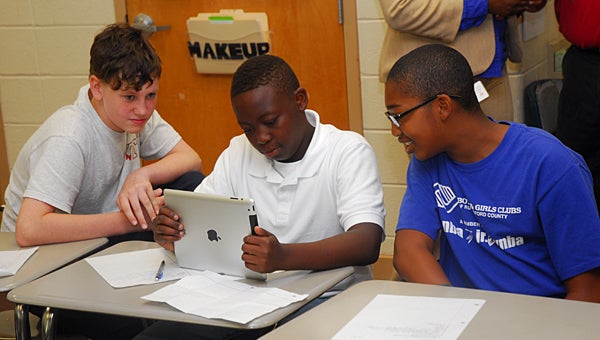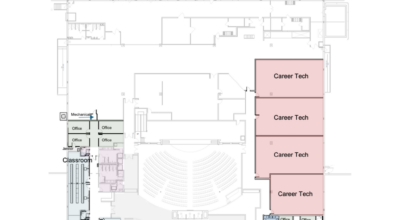Teacher uses QR codes to drive lessons home
Published 11:32 am Thursday, August 21, 2014

Thompson Middle School students, from left, Matthew Eubanks, Durrell Russel and Julius Bray use an iPad to complete lessons in Todd Davis’ geography class on Aug. 21. (Reporter Photo/Neal Wagner)
By NEAL WAGNER / Managing Editor
ALABASTER – Students in Todd Davis’ seventh-grade pre-AP geography class at Thompson Middle School talked quietly on the morning of Aug. 21 as they huddled around smartphones and tablets.
“Everyone is so engaged. They are taking ownership of their learning,” TMS Assistant Principal Desaree Jackson said as she looked over the classroom.
On a few days each week, Davis’ students use their digital devices to access to compliment the lessons they learn in the classroom.
On a recent quiz, Davis distributed sheets containing QR codes scannable by smartphones and other electronic devices. When scanned, the QR codes brought students to locations on Google Maps showing examples of geographic landmarks such as peninsulas, volcanoes and islands.
The students then used a separate piece of paper to identify which geographic category the Google Map location represented.
“They love to do it,” Davis said as his students scanned QR codes bringing them to Youtube videos explaining different types of geographic landmarks. “They are learning while they are doing this, but they don’t realize it.”
Through the school’s “bring your own device” program, students are able to bring their iPads, smartphones and other electronic devices to school to use in the classroom.
Each classroom has a traffic light diagram hanging on the wall indicating whether or not students are allowed to use their electronic devices in the class. A red light means electronic devices are not allowed in the class, a yellow light means devices will be allowed at some point in the class and a green light means students are free to use their devices to complete their classwork.
“It just makes it the same across the board,” Jackson said, noting the traffic light system has cut down on confusion with the school’s electronic device policy.
Using QR codes has also made it easier for Davis, as grading students’ quizzes online is a snap. The recent addition of schoolwide Wi-Fi has also made it easier for more teachers to incorporate electronic devices in their lessons, he said.









